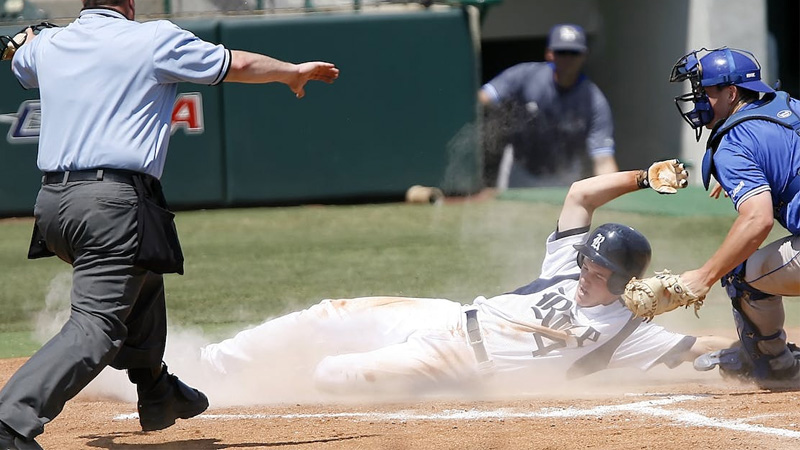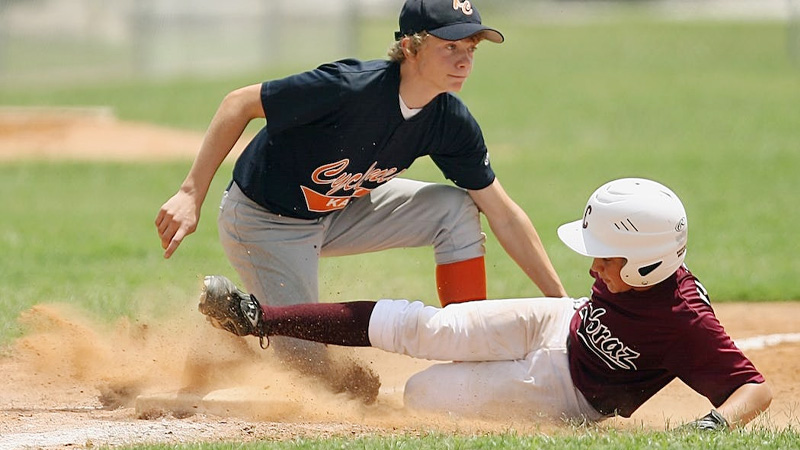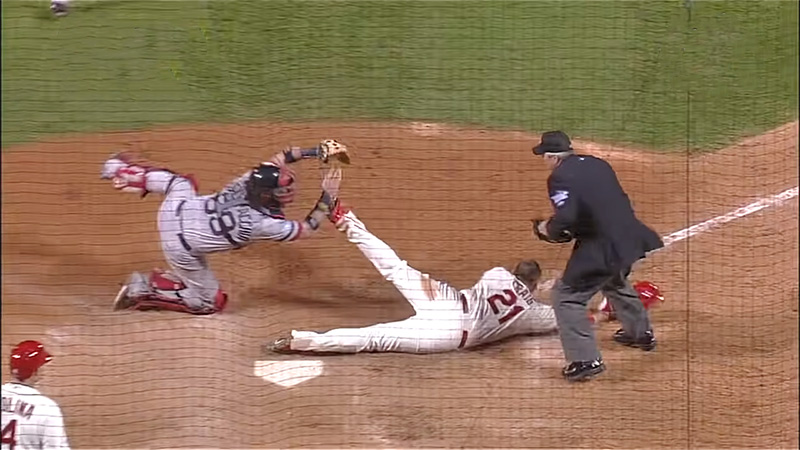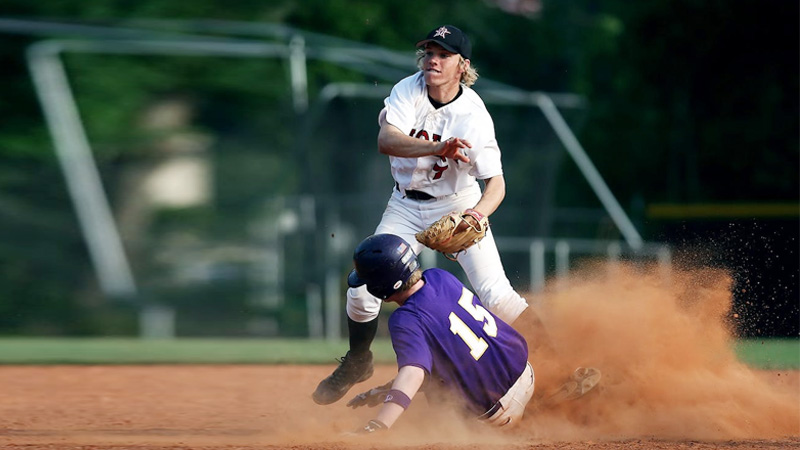Many baseball fans who have been watching baseball for even decades, can’t identify two similar facts, Obstruction and Interference. These parallel things so easily get mingled and spectators fail to understand what’s exactly going on, on the field. Well, if you understand the Baseball Obstruction rules properly, both factors will be clear to you.
In this case, many of you have a question: is it necessary to learn both terms as they are similar? The answer is yes, it is essential as they might be similar in action but the aftermath is not the same.
However, our discussion topic today is not interference, instead, it is obstruction. It will also help you understand the other facts as well. Actually, an obstruction is an act of hurdle by the fielder to the runner. Let’s learn the fact in detail.
What Are the Obstructions in Baseball?

The fact of Obstruction is easy and straightforward. Obstruction in the arena of Baseball refers to a particular situation where a fielder counteracts or obstructs a baserunner’s progress intentionally even though he is not in possession of the ball or fielding it. The umpire is the person who can encounter and decide to call for an obstruction. And when he signals for a call, it will be a dead ball.
In such a case, all the runners can be ordered to situate on the base. The umpire can give the order for the player’s placement if he thinks they could reach it if there was no Obstruction.
The umpire can also allow the play to proceed deliberately if the obstructed runner doesn’t make a play. But the umpire has to let the play proceed before it is ended and simply imposes a penalty to nullify the obstruction.
While explaining the rules of obstructions, Crew Chief John Hirschbeck says, “Obstruction is the act of a fielder obstructing a runner when not in the act of fielding a ball. It does not have to be [the] intent [to obstruct], OK? Once he has the opportunity to field the ball, he can no longer in any way obstruct the runner.”
History of the Baseball Obstruction Rules

Among the oldest baseball rules, the Obstruction rule is one of the most significant and oldest ones. It was codified in 1857’s laws of the National Association of Baseball Players. But it became a rule in the mid-nineties when the Baseball club in New York City encoded it in the rulebook.
Later on, in the recent time in 2019, the rule of obstruction has modified to cope with the new rules of the game. But the modification is moderate and you can’t actually call it a completely changed rule.
Before the recent modification, the rules of obstruction were followed in the same way. It has been around 150 years and the rule hadn’t been changed so much until 2019. That’s why you can call it one of the oldest baseball rules.
Types of Obstructions
There are two different types of Obstructions that can occur in a baseball match. Generally, these types aren’t categorized by specific names yet. And that’s why people called them Type ‘A’ and Type ‘B’ obstructions before the Minor League Baseball Umpire rule book was written in 2014. However, after the establishment of rule 7.06 by the Baseball Rule Academy, the changed system says,
“A – If a play is being made on the obstructed runner, or if the batter-runner is obstructed before touching first base, the ball is dead and all runners shall advance without liability to be put out, to the bases they would have reached, in the umpire’s judgment, if there had been no obstruction. The obstructed runner shall be awarded at least one base beyond the base last legally touched by such runner, before the obstruction. Any preceding runners forced to advance by the award of bases as the penalty for obstruction shall advance without liability to be put out.
B – If no play is being made on the obstructed runner, the play shall proceed until no further action is possible. The umpire shall then call “Time” and impose such penalties, if any, as in that umpire’s judgment will nullify the act of obstruction.”
This is how the Baseball obstruction rules are categorized with the rule explanation given by the Baseball Rule Academy.
Penalty in the Obstruction Rules

Now, let’s talk about penalties that can be the result of the obstruction in baseball. When the umpire calls obstruction, he can either penalize the obstructed player or team or award the obstructed player or team.
For instance, if a runner is obstructed, they might be given an “advance of the base” as an award. And if there are multiple runners on a base, all of them can be awarded similarly. That’s definitely a game-changing fact for the team.
However, it’s not so easy. The umpire can only call obstruction if the ball is not in the air. So, if the ball is flying through the sky, the runner won’t get any award even if they’re obstructed. However, when it’s a wide ball or the ball just hits the outfield, the runner can still be awarded a base.
In this case, multiple runners on base may not bring good fortune to the team. In such a situation, the umpire will wait and will only call obstruction once the play is over. For sure, this fact just brings extra excitement for the spectators.
The Aftermath of an Obstruction
At this point, you must be thinking about the other consequences of the Obstruction rules in Baseball. For sure there are some that can change the game within a second.
While enjoying a baseball match with a situation you need to remember that only the umpire can take all the decisions regarding the consequences. And all the players and the coaches are bounded to follow the orders of the umpire.
The following phenomena can happen as the aftermath of obstructions in a Baseball match.
- The runner is near third base and his score is obvious, he will get the score.
- When the fielder can be called out because of several obstructions.
- The runner is obstructed after reaching half of the base, and then he will be allowed to advance to the next recent base, past the one he was about to complete.
- When the runner interferes with the fielder, he can be called out too. It won’t be an act of Obstruction anymore and it will be an act of interference.
Comment on Baseball Challenge Rule
The MLB authority and the other Baseball Committee frequently update different rules of Baseball for the players, coaches, and umpires. The obstruction is not a separate rule that is outside the field of their moderation.
Many times, they added specific comments that are used as the moderation for the rules. And those comments are also considered parts of the rules. That’s why learning about those comments is also essential in the term of Baseball Obstruction.
Official Baseball Rule 2.00 comment
When a fielder is about to catch a thrown ball or if a ball is hit in his direction, he needs to position themselves to make the catch. This is called “fin the act of fielding the ball.” The umpire will determine if the player is in the process of fielding the ball. If the player tries to catch the ball but misses, they are no longer considered to be in the process of fielding.
Official Baseball Rule 7.09 comment
When a fielder makes an obstruction while fielding a ball, that will be called a violent and flagrant case. It’s because of the rule that gives him the right of way though it’s not a license right.
Misconceptions on Baseball Obstruction Rule
There are some sort of common misunderstandings about the rule of Obstruction in Baseball. Some people believe that obstruction has to involve direct physical contact that obstructs the opposition player. It’s not always about a player physically blocking another player on purpose. In fact, a player can obstruct another player without even touching them.
Sometimes, fielders change their usual running path frequently and intentionally block the view of a runner who is trying to reach home plate. This action should still be considered as an obstruction.
Another common mistake is thinking that obstruction and interference are the same thing. They’re actually different, and they have different consequences too. Obstruction is when a fielder blocks a runner, while interference is when the runner gets in the way of the fielder.
FAQs
Q: What are the differences between interference and Obstructions in Baseball?
A: Initially, an obstruction and an interference ain’t the same thing. Interference occurs when a fielder is interfered with by a runner. The fielder cannot contact the runner while he is fielding. If he does that, it will be an act of interference. For his act, he will be called out.
On the other hand, an obstruction is a completely different situation where the fielder himself interferes with the runner. Because of the obstruction, the runner is awarded an additional base.
Q: Is obstruction an error?
A: No, obstruction is not an error, and most of the time, the fielders interfere intentionally and it cannot be under the rule of error.
Q: Is obstruction an immediate dead ball?
A: No, an obstruction can never be an immediate dead ball. Indeed, it’s a delayed dead ball. This delayed dead ball always results in an award for the runner with at least an extra base.
Final Verdict
As history says, Obstruction is one of the oldest Baseball rules that didn’t even see a lot of changes in the past 150 years. The baseball obstruction rule is very simple and it’s all about the fielder’s hurdle against the runners. And the action brings an upshot for the runner who gets an additional base.
Hopefully, you will have no more misconceptions about these obstruction rules and you won’t mix it up with another term, interference. I’ve tried my best to enclose the details of the obstruction rules to make it understandable for you.
At this point, you can leave a text in the comment section if you have any more confusion. Thank you for your time.







